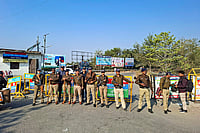Blockchain has been referred to as being one of the biggest innovations of the last decade. From powering DeFi platforms to driving NFTs and play-to-earn game economies, blockchains are broadening their horizons into increasing areas. While there is progress being witnessed, there is that which has long been a thorn in the flesh and may potentially hold back mass adoption: scalability. Blockchains like Ethereum, with their global bases of developers and healthy ecosystems, are still congested despite millions of users attempting to act simultaneously. This results in rising costs, bottlenecks, and slowness, all contrary to the dream of fluid decentralization.
Scaling solutions were introduced to solve the challenge, and among them are Layer 2 protocols. Of these, rollups are some of the most exciting and desirable tech. Rollups settle off-chain exchanges with security rooted in the base chain, supporting cheaper and faster interactions without forfeiting trust. But building and launching rollups from the ground up is not a walk in the park. The cryptographic proof complexity, data availability protocols, and interoperability needs will murder most dev teams.
That is where Rollup-as-a-Service (RaaS) enters the picture. As cloud computing hosted abstraction removed the hosting of physical servers' complexity, RaaS platforms removed the deployment and execution complexity of rollups. RaaS platforms offer pre-configured frameworks, managed environments, and developer tools that enable any project (an enterprise, startup, or DAO) to deploy scalable solutions in minutes. This is a technical analysis of Rollup-as-a-Service, its technical underpinnings, its impact on blockchain adoption, its probable disadvantages, and its possible future.
The Blockchain Scalability Problem
To arrive at Rollup-as-a-Service, it first needs to be explained why it is a mammoth problem. Public blockchains like Ethereum have an army of decentralized nodes that are utilized to validate and store every transaction. This renders the process transparent, secure, and tamper-proof but places natural constraints on the amount of transactions that can be handled at one time. Ethereum, for instance, handles only a tiny proportion of the transactions per second older payment handlers such as Visa or Mastercard handle.
Transaction fees (or gas fees) skyrocket radically high in times of high demand. They are being charged extortionate fees so that their payments clear in a timely manner, and it can price small payments out of the market altogether. It may be more expensive to create a simple NFT or send a small payment when the network is congested than it does to clear the transaction. For businesses and developers attempting to create applications for the mass populace, this is a gigantic scale entry barrier.
Scaling end-to-end on Layer 1 has proven difficult. Scaling block size or changing consensus algorithms always has a decentralization or security trade-off. As a response to this, the industry has taken asylum in Layer 2 protocols—stacking protocols over foundation chains that provide throughput without losing the security assurances of the base blockchain. Rollups have been one such solution that has been an even-handed solution that provides scalability with security.
Rollup Understanding
Rollups work by bundling or "rolling up" several transactions and sending them to the base blockchain on Layer 1 in a compact package. It saves data and computation cost on the main chain without sacrificing cryptographic safety assurances. Users are offered the rollup as if it were a standalone blockchain, but the rollup is instead dependent upon the base layer to settle and to arbitrate disputes.
Two principal forms of rollups exist: Optimistic Rollups and Zero-Knowledge Rollups (ZK-Rollups). Optimistic rollups presume transactions to be valid by default, but anyone can dispute a counterfeit transaction within the window of dispute. Fraud proofs guarantee system integrity, yet the majority of transactions go unchallenged. By contrast, ZK-Rollups use cryptographic proof of correctness validity—zero-knowledge proofs—to check for correctness of each batch before it is dispatched to Layer 1. This makes ZK-Rollups settle faster and more secure in certain respects but expensive to compute zero-knowledge proofs.
Both types of rollups greatly boost throughput while cutting transaction costs, and hence are of prime importance to long-term scalability in blockchains. They do add complexity, though. Operating a rollup and building one are matters of technical proficiency when it comes to experience with cryptography, distributed systems, security audit, and upkeep. And that is where Rollup-as-a-Service shows up in its revolution.
What is Rollup-as-a-Service?
Rollup-as-a-Service, or RaaS, is a managed infrastructure platform that enables developers, startups, businesses, and communities to host rollups without the need to design and run them by scratch. Rather than an effort that might involve months or years of bespoke engineering to build a bespoke rollup system, teams can count on the fact that a RaaS provider will do the heavy lifting.
A RaaS platform would generally include configurable rollup templates, developer toolkits, data availability integration, monitoring systems, and upgrade paths. They would be able to choose parameters like whether they need an optimistic rollup or a zero-knowledge rollup, the manner in which they want to implement data availability, and what governance models they would like. Technical deployment and maintenance on their behalf would be done by the provider.
This is an indication of maturity for cloud computing. Organisations formerly bought, installed, and served physical servers to serve applications when the internet was in its infancy. With the entry of Infrastructure-as-a-Service (IaaS) vendors such as Amazon Web Services, organisations were concerned about products rather than servers. Rollup-as-a-Service enables it similarly by enabling blockchain developers to concentrate on creating user interfaces and business logic rather than being concerned with infrastructure.
How Rollup-as-a-Service Works
A RaaS platform is generally a layering of separate services. Bottom-up, it offers a rollup architecture that consists of execution environments, consensus logic, and settlement mechanisms. It may be optimized to be zero-knowledge or optimistic rollups, as provided by the provider.
Along with this foundation, RaaS platforms facilitate data availability layers. Data availability makes sure that all participants involved are accessible to a transaction's data, which is vital for security and transparency. Ethereum or another Layer 1 can be utilized by some providers, and others can introduce optimized layers with reduced cost storage.
The service also consists of monitoring and security products. They may be automated software that identifies attempted fraud, logs performance statistics, and alerts on anomaly detection. Interoperability modules, like bridges and APIs, to enable rollups to interact with other blockchains, decentralized apps, and wallets are provided by most RaaS providers.
Developers engage with RaaS via a mix of dashboards, APIs, and SDKs. Straightforward usability enables even generalist teams to implement and install rollups within hours. After deployment, upgrades, patching, and infra setup are managed by the provider to keep the rollup running as needed.
Why Rollup-as-a-Service Matters
The importance of RaaS is that it brings scalability on the blockchain within reach of everyone. With the services, well-funded teams with significant experience were the only ones who could develop and operate rollups. That kept rollup potential to a relatively tiny group of participants. RaaS turns the equation around by lowering the cost of deploying sophisticated scalability solutions.
It translates to developers that they can focus more resources on developing applications that improve users rather than months of writing infrastructure. To businesses entering the blockchain space, RaaS translates that they can try out decentralized technology without significant in-house engineering resources investment. To the broader ecosystem, it translates to accelerated innovation, greater diversity in use cases, and additional pressure for mass adoption.
While cloud computing facilitated fast innovation for technology platforms and startups in the Web2 era, Rollup-as-a-Service can facilitate the next generation of Web3 applications.
Applications and Use Cases of Rollup-as-a-Service
Use cases for RaaS span industries and use cases. In finance, decentralized finance rollups run on RaaS can effectively perform high-frequency trading, lending, and liquidity operations with minimal cost. In NFT marketplaces, rollups facilitate affordable minting, transfer, and transaction, providing more main street access to digital assets. In games and metaverse applications in which there are tens of thousands of actions per second, rollups deliver the scalability that makes possible fast, interactive experiences.
Outside of the crypto-native ecosystem, businesses are testing RaaS for supply chains, identity authentication, and data transfer. Those industries value the security and transparency of blockchain but need scalability to handle real-world data volumes. RaaS lets them access that scalability without hiring specialized blockchain personnel.
Another use case that's picking up pace is interoperability. Rollups can serve as interoperability points between chains, and RaaS providers can make integration easier for large ecosystems. It could be the enabler for the future multi-chain vision if assets and applications transfer effortlessly from one blockchain to another.
Benefits of Rollup-as-a-Service
The benefits of RaaS extend well beyond mere time savings. Perhaps the most significant benefit is speed of deployment. Rather than dedicating years to rolling up from scratch, projects can get products to market in weeks, realizing massive time-to-market advantages. That's especially critical in the Web3 world, where velocity fuels competitiveness.
Lower-risk is another important advantage. Rolling up from scratch can leave teams open to security flaws if there happens to be a design or implementation bug. RaaS providers, however, almost always have battle-tested tooling and regularly audit, which drastically reduces those risks.
Operational efficiency is the second benefit. With RaaS, businesses don't have to worry about infrastructure, upgrades, or system health—those are handled by the provider. This releases resources to spend on product development and innovation.
Flexibility is also one of its strengths. RaaS platforms enable developers to bespoke-design rollups to their own specifications, whether it is governance models, fees, or integration. Combined with the economy of shared infrastructure, this is making RaaS an option for any size of project.
Challenges and Risks
Despite its potential, RaaS is filled with pitfalls. Dependence on providers is perhaps the biggest of these pitfalls. A project that is very reliant on one RaaS provider is exposed to threats in the event that the provider fails, shifts its pricing model, or modifies terms of service. Vendor lock-in would also hinder projects' ability to switch to other solutions in the future.
Security is another issue. Although RaaS vendors provide ready-to-use frameworks, no framework can ever be secure in nature. Websites are therefore responsible for conducting their own audits and performing best practice to stay safe. Governance too is an issue. Since infrastructure is outsourced, questions arise as to who maintains upgrades, resolves disputes, and moderates the criticism within the community.
Interoperability is still an issue as well. Various rollups can be making use of varied data availability solutions or proof systems, and that complicates communication between chains. Standardization from providers is still pending, and until that gets created, there's gonna be some fragmentation.
Lastly, the RaaS market is still quite new. Not all providers are as stable, open, and inviting as one another, and thus it is very important that projects contemplating adoption do their research.
Key Players in the RaaS Ecosystem
There are a number of companies spearheading efforts to build Rollup-as-a-Service platforms. AltLayer, Caldera, and Conduit are some of the companies that are working on modular designs where developers can roll up bespoke rollups within a matter of weeks. The platforms will typically become interoperable with Layer 1 chains such as Ethereum and Layer 2 stacks such as Optimism's OP Stack or zkSync's Hyperchains.
All of the suppliers compete on doing something different, like having more developer tooling, customized data availability solutions, or interoperability with infrastructure providers. Some are enterprise-focused, providing customized solutions to businesses, while others provide services to Web3-native projects. With maturity in the market, consolidation and standardization will follow that, along with competition on security, scalability, and interoperability.
The Future of Rollup-as-a-Service
In the future, RaaS is going to be a fundamental part of blockchain infrastructure. As Web3 is becoming more widely accepted, there is going to be a huge demand for scalable, reliable, and dynamic rollups. RaaS can be the catalyst for this growth, just like cloud services enabled Web2 giants.
One of the most promising areas is the inclusion of zero-knowledge technologies. Improved ZK-proofs enable the RaaS providers to provide rollups with guarantees of privacy preservation and more robust cryptographic guarantees. Modular blockchain infrastructure is yet another direction, and in this direction, consensus, data availability, execution, and settlement would all be completely divorced from each other. RaaS would enable developers to configure these components in a plug-and-play manner and design specific blockchain environments for different use cases.
Interoperability will also be center stage. With a multitude of Layer 1 and Layer 2 ecosystems competing for attention, RaaS vendors who can make it easy to communicate cross-chain will be highly valued. Decentralized RaaS models could be a possibility with communities co-sharing rollup infrastructure and not relying on one vendor.
Conclusion
Rollup-as-a-Service is a revolutionary breakthrough in blockchain infrastructure. It demystifies the rollup deployment complexity, and thus it enables a wide range of projects to utilize the optimal features of scalability, affordability, and speed. It is leveling the playing field for the crypto-native business and teams as it comes in by opening up highly advanced cryptographic and infrastructural breakthroughs to everyone.
The parallel with cloud computing is strong: while Infrastructure-as-a-Service permitted internet-scale applications to have runaway success, Rollup-as-a-Service can set free the next wave of decentralized innovation. Governance, security, and vendor lock-in remain concerns, but the path is clear. RaaS will be the foundation upon which Web3 is built, guiding blockchain adoption and scale over a decade and more.

























